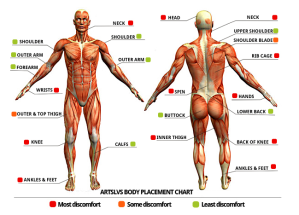I am continually getting asked, “How do I take care of my new tattoo?”. I am glad that my clients continue to ask this very important question, because it is a key aspect in ensuring that your new tattoo heals fast and appropriately. The following is a copy of what each one of my clients receives in their aftercare packet. (It may seem like a lot of information all at once, but believe me it will come in handy once you head home from getting your new tattoo.)
Tattoo Aftercare Instructions:
If a bandage was applied remove it after one to two hours. All wounds need to breathe if they are to heal properly.
Wash the tattoo using a mild antibacterial soap (such as Dial) and warm water. Take care to remove all traces of blood and plasma as this will cause scabbing. Do not scrub the tattoo with a washcloth during the two week healing period. Pat it dry with a clean, soft cloth or paper towel and leave it alone for about 20 minutes, basically until it starts to feel like the skin is a little tight and dry. This allows for excess moisture from the swelling under the skin as well as moisture introduced by washing the tattoo to evaporate out. It’s very important to let your tattoo “breathe” like this any time you get it wet before it gets into the peeling stage.
Once dry, apply a very thin coat of ointment to the tattoo. We recommend using Vitamin A&D as ointment, or other such tattoo aftercare products. Only use enough to make it shine, a little goes a long way. Too much ointment traps germs into your new tattoo which can potentially lead to infection. Just a dab will do. Work it in well. Dab off all the excess with a paper towel. There should be just enough to keep the tattoo moist and to keep it from scabbing. Do not re-bandage the tattoo.
Repeat the cycle of washing, drying, and applying ointment to the tattoo about 3-4 times per day for the first 3 days (while the tattoo feels tender).
Ointment can be applied whenever the tattoo is feeling stiff or dry but beware of over-moisturizing. Your body will absorb what it needs where it needs it. Apply ointment twice a day for two to three days then switch to a regular unscented moisturizer like Tattoo Goo Lotions or something over the counter such as Eucerin, Lubriderm, Curel, or Jergens. Apply moisturizer twice a day for the remainder of two weeks. Do not use lotions that contain color or fragrance at all until the healing is complete. (Usually anywhere from ten days to two weeks; Possibly longer for slower healers.)
You must keep your tattoo moisturized! When the tattoo is kept moist it doesn’t have a chance to form a scab but does form a thin membrane to protect the tattoo while it heals. This layer peels off very similar to a sunburn (do not peel your tattoo, you will pull the ink out!) and it is perfectly normal to see small flakes of colored skin falling off during this stage of healing.
You must keep your tattoo clean! However, long showers or baths must be avoided for 2 weeks. Prolonged soaking can and will loosen scabs if any have formed, or will soak through the soft tissue turning it into a soggy mess and cause your ink to flow down the drain. This includes swimming in the Ocean or a Pool, Hot Tubs, and Saunas. Short showers are best, under ten minutes if possible.
Please refrain from scratching or picking at the tattoo. Scrubbing with a washcloth can be very harsh on a tattoo and will cause your colors to fade. Disrupting the tattoo while it’s healing can also cause scar tissue. It is normal for the tattoo to become very itchy during the healing time. Just remember not to pick or scratch no matter what!
Remember, the sun is BAD for your tattoo! Whether the tattoo is new or old, if you want it to look nice and heal properly, keep it out of the sun. A sunburn on a new tattoo can cause a lot of problems. It will dry out your tattoo and could cause it to form a horrendous scab resulting in fading before it is even healed. It will also take much longer to heal completely and promotes scarring in a new tattoo. Wait until it is fully healed to go back in the sun or a tanning bed and make sure you put on a high quality sunblock. Never put sunblock on a tattoo that is still healing. Wait until it is fully healed before going into the sun.
Following all of these simple steps will ensure that you end up with the best result with minimal complications and your tattoo will stay looking bright and beautiful for many years to come.














